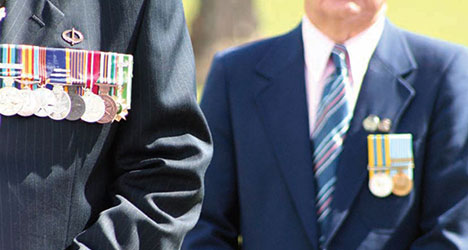PC News - May 2019
A better way to support veterans

A Commission draft report – A Better Way to Support Veterans – found that the veterans’ compensation and rehabilitation system is not fit-for-purpose, is out-of-date, and does not work in the interest of veterans, their families and the Australian community. The system requires fundamental reform.
Australia’s veteran support system
The Department of Veterans’ Affairs (DVA) provides support to current and former Australian Defence Force (ADF) members and their families, including income support and compensation, health care, rehabilitation, transition support and other services to support wellbeing. In 2017-18, DVA spent $13.2 billion on the veterans’ rehabilitation and compensation system (or about $47 000 per client).
DVA currently supports about 166 000 veterans and about 117 000 dependants. DVA clients span all generations and life stages, but the majority of DVA clients are in the older age groups – about 194 000 are 65 years or older, and of these, 98 000 are aged over 79 (figure 1).
The legislative environment is byzantine. The current system has three main Acts:
- the Veterans’ Entitlements Act 1986 (VEA)
- the Safety, Rehabilitation and Compensation (Defence-related Claims) Act 1988 (DRCA)
- the Military Rehabilitation and Compensation Act 2004 (MRCA).
The Acts have different eligibility requirements and provide different levels of support to veterans through different claims and appeals processes (figure 2). The timing and type of the relevant service determines which Act covers the veterans’ impairment. Veterans with multiple impairments can have different impairments covered under different Acts.
Figure 1: DVA clients by age, December 2017
Why the veteran support system needs reforming
The veteran support system is more generous overall than workers’ compensation schemes for civilians, but it is not an effective system. It is complex, difficult to navigate, inequitable (veterans with the same injury or illness can receive different levels of support), and poorly administered (claims typically take months to process and there is limited management and oversight of client supports and treatments). Some of the supports discourage wellness, some are not well targeted, and others are archaic, dating back to the 1920s.
Incentives for strong performance and good outcomes are also missing from the system.
- Defence (the employer) bears no financial responsibility for the cost of compensation, rehabilitation, transition services or medical treatment for service-related injuries and illnesses after a member leaves the service – DVA bears the cost. This creates an incentive for Defence to shift the cost of long-term injuries and illness to DVA.
- Little (if any) attention is given to the performance and long-term sustainability of the veteran support system. This is in part because a real budget constraint is missing (the system is demand driven) and there is little accountability or incentives for DVA to operate the system efficiently and effectively.
The outcome is a system that fails to focus on the lifetime wellbeing of veterans, with too little attention placed on prevention, early intervention, rehabilitation and transition support. The split in responsibility for the wellbeing of military personnel between Defence and DVA also results in less efficient and effective administration of supports, including, for example, a lack of continuity of support.
Figure 2: Veteran supports are provided under three main Acts
New governance arrangements are needed for a lifetime focus
To achieve a focus on the wellbeing of veterans over their lifetime, the veteran support system needs to be brought more in line with contemporary workers’ compensation schemes and modern person-centred approaches to rehabilitation, health care and disability support. It needs new governance and administrative systems that can meet the needs of veterans, while operating in a modern, efficient and effective way. The Commission’s draft report recommends:
- a new independent agency – the Veteran Services Commission – be established to administer and oversee the performance of the veteran support system
- a single Ministry for Defence Personnel and Veterans
- DVA’s policy responsibility be transferred to the Department of Defence within a new Veterans Policy Group
- levying an annual premium on Defence to fund the expected costs of future claims
- responsibility for preparing serving veterans for, and assisting them with transition to, civilian life be centralised in a new Joint Transition Command within Defence.
A simpler system for veterans and their families
The draft report also recommends simplifying the current system by:
- making it easier for clients to access (a complex system does not need to be complex for users)
- rationalising benefits
- harmonising across the three Acts (including a single pathway for reviews of decisions, a single test for liability and common assessment processes)
- moving to two compensation and rehabilitation schemes by July 2025
- – the proposed Scheme 1 would largely cover an older cohort of veterans with operational service and injuries that occurred before 2004, and would be based on a modified VEA.
- – the proposed Scheme 2 would cover all other veterans, based on a modified MRCA – over time Scheme 2 would become the dominant scheme (figure 3).
Figure 3: Eligibility under the two schemes
A complete description of the Commission’s findings, recommendations and information requests is available in the overview of the draft report.
A Better Way to Support Veterans
- Read the Draft Report released December 2018
- The Commission’s final report will be presented to the Australian Government in June 2019.